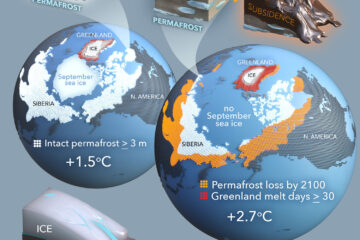Ecosystem warming extends vegetation activity but heightens vulnerability to cold temperatures
Shifts in vegetation phenology are a key example of the biological effects of climate change. However, there is substantial uncertainty about whether these temperature-driven trends will continue, or whether other factors—for example, photoperiod—will become more important as warming exceeds the bounds of historical variability. Here we use phenological transition dates derived from digital repeat photography to show that experimental whole-ecosystem warming treatments of up to +9 °C linearly correlate with a delayed autumn green-down and advanced spring green-up of the dominant woody species in a boreal Picea–Sphagnum bog. Results were confirmed by direct observation of both vegetative and reproductive phenology of these and other bog plant species, and by multiple years of observations. There was little evidence that the observed responses were constrained by photoperiod. Our results indicate a likely extension of the period of vegetation activity by 1–2 weeks under a ‘CO2 stabilization’ climate scenario (+2.6 ± 0.7 °C), and 3–6 weeks under a ‘high-CO2 emission’ scenario (+5.9 ± 1.1 °C), by the end of the twenty-first century. We also observed severe tissue mortality in the warmest enclosures after a severe spring frost event. Failure to cue to photoperiod resulted in precocious green-up and a premature loss of frost hardiness, which suggests that vulnerability to spring frost damage will increase in a warmer world. Vegetation strategies that have evolved to balance tradeoffs associated with phenological temperature tracking may be optimal under historical climates, but these strategies may not be optimized for future climate regimes. These in situ experimental results are of particular importance because boreal forests have both a circumpolar distribution and a key role in the global carbon cycle.


